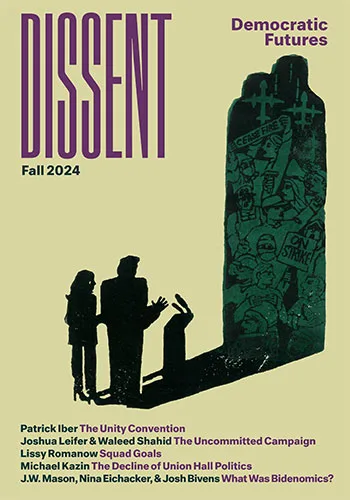Inflation, the Friendly Ghost
Inflation, the Friendly Ghost
Monetary and fiscal policy, according to conventional political wisdom, amounts to a choice between encouraging growth and restraining it, between policies that lower the unemployment rate (but risk a higher rate of inflation) and those that control prices (but risk a higher rate of unemployment). This is often portrayed as a delicate balancing act, with central bankers and federal legislators tiptoeing between public demands for more jobs and public fears of higher prices.
In fact, it is bankers that worship “sound money” (a point first made clear in the Populist campaign for the coinage of silver, and an expanded money supply, in the 1880s) and who fret about the inflation eroding the value of their outstanding loans. And it is banker’s anxieties that have shaped the modern history of macroeconomic policy—especially since 1979, when then-Fed chair Paul Volcker made a clear and sustained choice to whip inflation by slowing the economy and pushing unemployment into the double digits.
Today, the Fed’s policies are less severe; indeed, it has effectively pared interest rates to zero and extended its purchases from government bonds to private securities (“quantitative easing”) in a vain effort to stimulate new investment. The bankers’ burden has been taken up by Congress, whose turn to austerity—animated by fears of skyrocketing public debt and unstable prices—cut short our experiment with expansionary fiscal policy (the “stimulus”) and canceled out any benefit of expansionary monetary policy.
To what end? The specter of spiraling prices and interest rates, featured prominently in the now-infamous Reinhart and Rogoff research, is about as real—and about as frightening—as Casper the Friendly Ghost. Interest rates are as close to zero as they can get. And yet inflation is virtually nonexistent—hardly surprising in an economy marked by low demand and chronic underemployment.
The annual inflation rate has topped 5 percent only once (5.4 percent in 1990) in the last thirty years. It has been under 4 percent for twenty-five of those thirty years, and 3 percent or lower in seventeen of them. Over that same span, wages have stagnated and the share of national income going to wages has fallen steadily. And cycles of recession and unemployment have continued unabated. Where prices have reared their head, episodically in food and energy, they are driven by discrete supply or demand pressures—and not by an overheated economy.
The implicit trade-off between more jobs and higher prices is represented by a measure with the indelicate label “non-accelerating inflationary rate of unemployment” (or NAIRU). Sometimes called the “natural rate of employment,” the NAIRU is the estimate of the lowest unemployment rate that can be achieved without spurring inflation. The Congressional Budget Office’s NAIRU has historically hovered around 6 percent (it is 5.5 percent right now). The Federal Reserve has indicated that it might start to lean on the brakes at 6.5 percent unemployment.
So one way to look at our policy priorities (and here I follow the lead of Jared Bernstein) is to take note of the movement of the real unemployment rate around the NAIRU line. During recessions (the grey bars on the graph above), unemployment spikes well above the NAIRU target. In time spent above this line (the red peaks) too many people are out of work and productive potential is being squandered. Time spent below the line (the light blue valleys of full employment) is only a problem if it spurs unmanageable inflation. But, as we can see from the graph below, this is rarely the case.
In recent years (or decades) we have spent much more time above the NAIRU line (and often well above it) than below it. This has come at tremendous cost to working Americans and their families, and to the economy. Our shallower and less frequent ventures below the line (the boom of the late 1990s is a case in point) delivered real wage and income gains without a whisper of an inflationary threat.
Colin Gordon is a professor of history at the University of Iowa.




